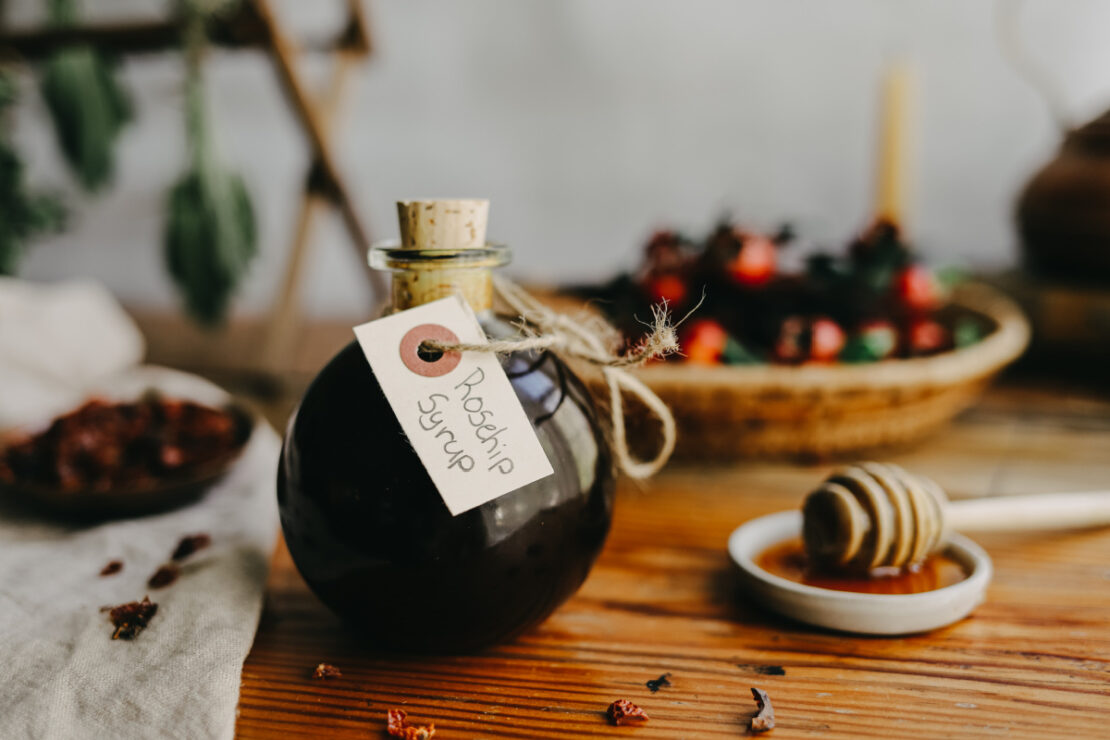
How to Make Rosehip Syrup
Rose hips are my favorite herbal ally to call on when making a syrup. The constituency profile and energetics of rose hips mesh so well with preservation and delivery by syrup. Let’s look at what makes rose hips the perfect ally for syrup making, and some of the reasons we might make an herbal syrup. Then I’ll share a rosehip syrup recipe, so you can make this delightful tonic for yourself.
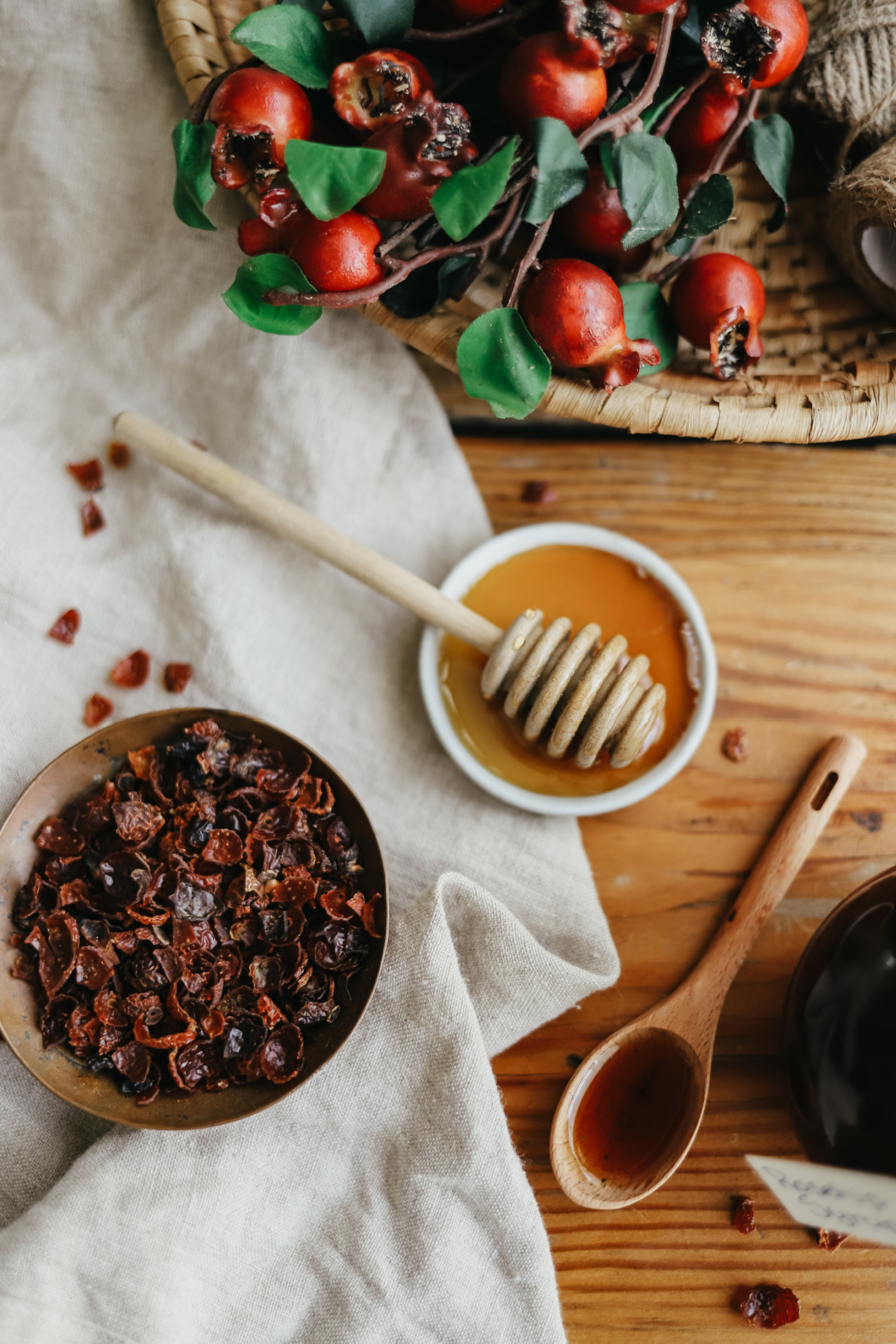
Rose Hips – Dog Rose (Rosa canina)
Rose hips are the fruit of the rose plant. The fruit sets after the flower is pollinated in the early summer. The rose hips start out green, and ripen to a bright red color in the fall. For herbal preparation, harvest and use the hip when it is fully ripe. While dog rose is the official plant in commerce, many wild rose species produce hips that can be used interchangeably with the official plant.
If you wildcraft your own herbs, here are some tips on how to stick to ethical practices. With rose hips, we just want the fleshy outer part. If cultivating or wildcrafting your own rose hips, garble the seeds away from the flesh of the fruit. If purchasing rose hips, you can buy them with the seeds removed.
Rose is a plant that has the capacity to nourish and encourage our hearts. Its energetics are uplifting and heart-centric (Masé, 2011). The hips work to strengthen the circulatory system physically (Anderson et al., 2012). After all, it’s difficult not to have your heart inspired in the presence of a generous queen. The taste of this fruit is slightly sweet, with a delicious amount of tang. Hips are high in vitamins C, A, B1, B2, B3, and K, as well as flavonoids, tannins and pectin (Chevallier, 2000).
It is the high pectin content that makes rose hips so wonderful as a syrup. This natural pectin content adds body to a syrup, making it nice and thick. The high vitamin C content, and accompanying tangy flavor give the syrup a nicely balanced, rather than overly sweet, final flavor. All of this, combined with the maternal nourishing and uplifting qualities of the rose make a rosehip syrup too delectable to deny.
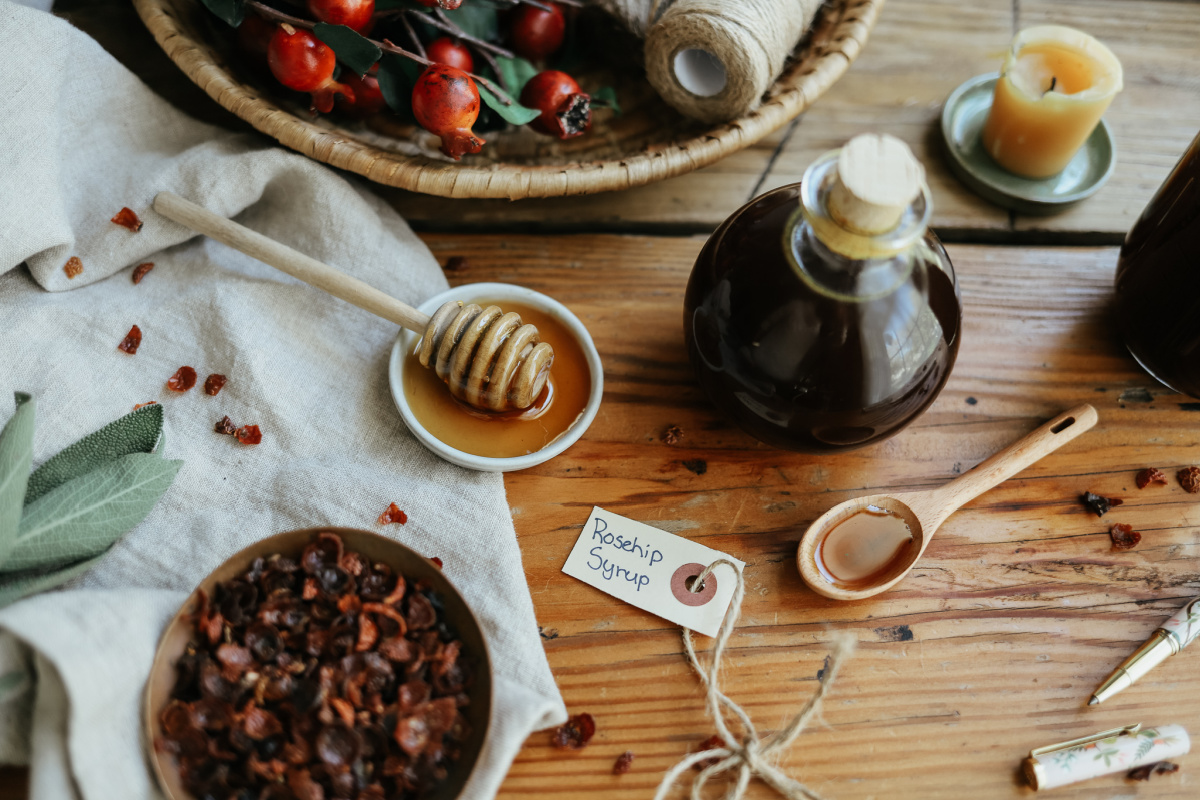
Herbal Syrups
As Mary Poppins put it, “A spoonful of sugar helps the medicine go down.” Syrups, essentially a sugar-saturated aqueous herbal extraction, are a delightful way to increase the palatability of herbs and compliance of the herb taker. In addition to upping the enjoyment factor, the sugar content of syrups acts as a preservative, increasing the shelf life of the rosehip syrup preparation.
Sugar is a fuel source and can feed the growth of organisms big and small. Small organisms like yeast and mold can multiply vigorously with access to sugar and water. However, their abilities to grow are decreased as the sugary saturation point of a solution is neared (Green, 2002).
While any form of sugar can be used to create a syrup, my personal preference is honey, due to the host of benefits that honey brings to any elixir. Maple syrup is a good vegan alternative to honey, and also brings additional benefits to the finished product.
Ample sweetener can act as a sole preservative, at a 2:1 ratio of sweetener to liquid, but you also end up with an extremely sweet end result. This level of sugar concentration is necessary when refrigeration is not accessible. When refrigeration is available the sugar content can be brought down to a more palatable range, and the preservative power can be bumped up through the addition of brandy or another alcohol (Green, 2002).
The rosehip syrup recipe shared here uses a combination of sweetener and alcohol as a preservative. When kept in the refrigerator, syrups prepared as such can last up to 6 months. If any signs of fermentation present themselves, it is best to compost or otherwise dispose of syrup. The most notable sign of spoilage, apart from the smell, would be the build-up of pressure under the lid. If you notice a pop or hiss when you remove the cap from your syrup it is a good indication that fermentation has begun.
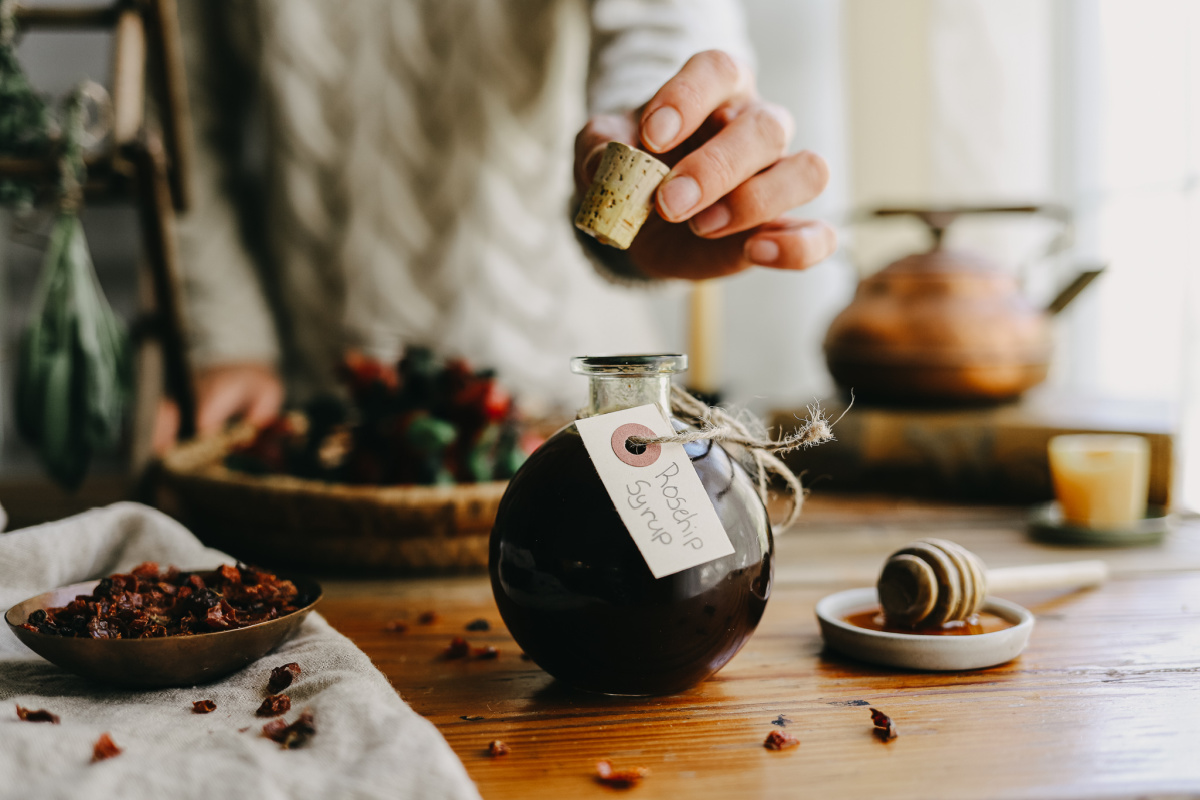
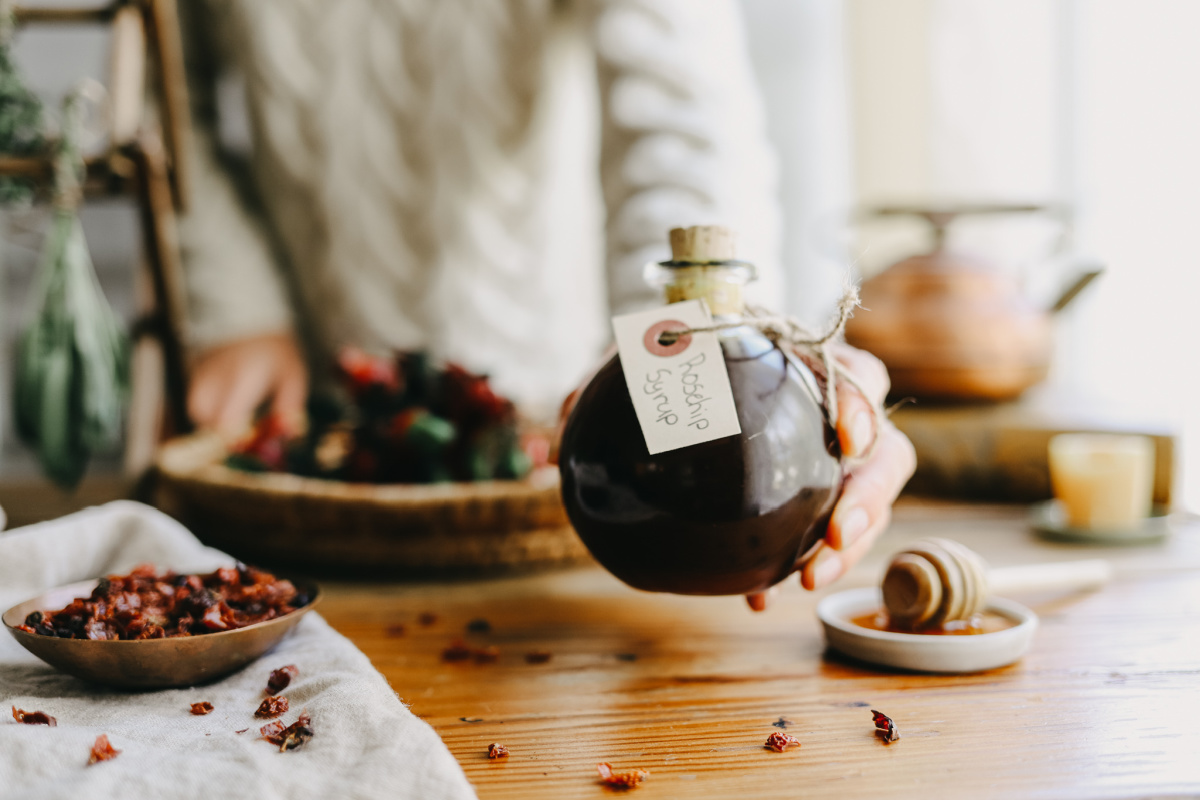
This rosehip syrup recipe is a healthy tonic and a delightful way to get your intake of vitamin C. Adapted from recipes by James Green and Marye Cameron-Smith.
2 ounces dried rose hipsRosehip Syrup Recipe
1 quart distilled or filtered water
1 ½ cups honey
½ cup brandy
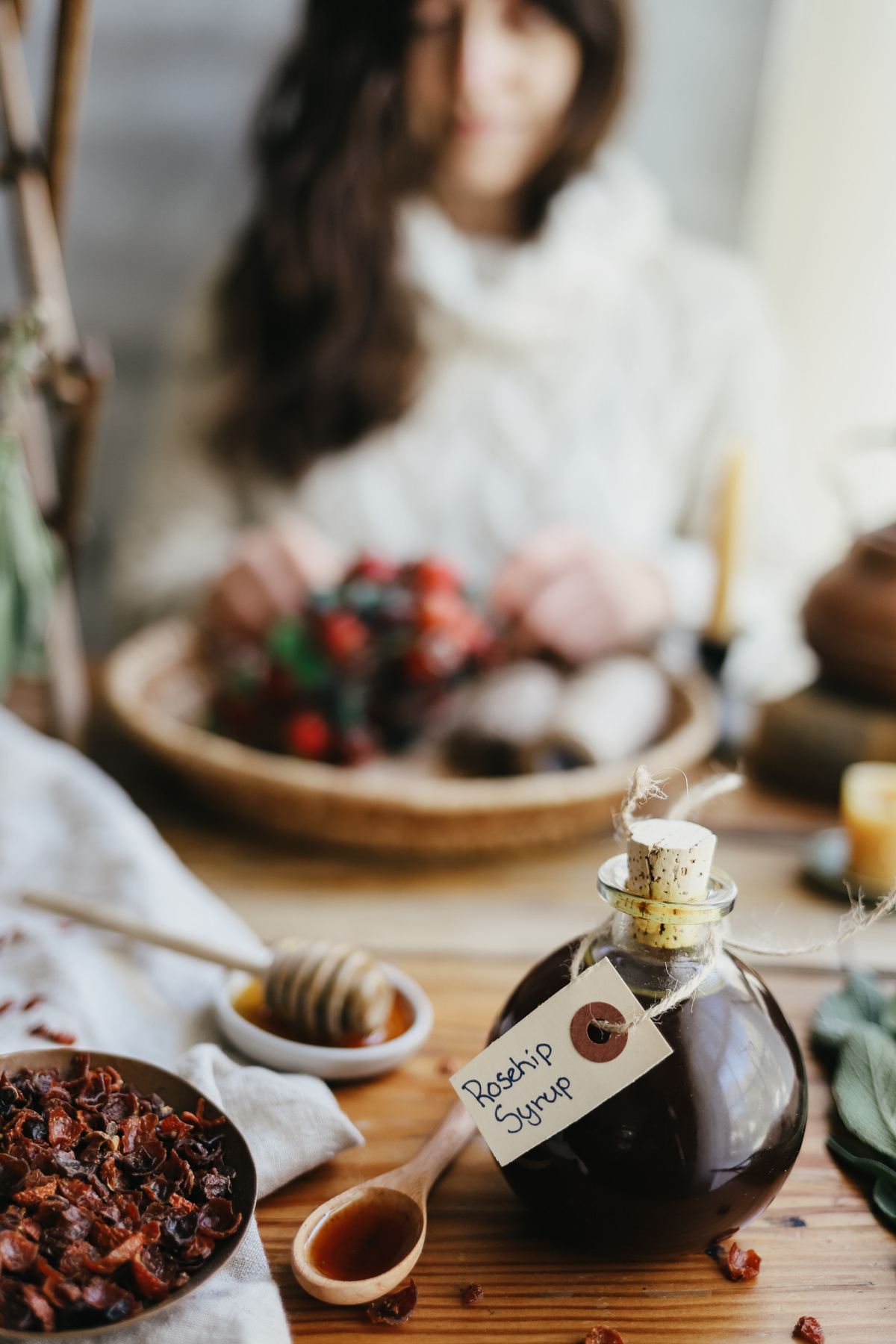
In Closing,
Rose hips are a delicious and nutritious herbal ally. Their high pectin content makes them well suited to a syrup preparation. Syrups are prepared for the purpose of preserving and increasing the palatability of herbal preparations. This rosehip syrup can be taken by the spoonful on a daily basis, as a tonic. It can also be added to oatmeal, poured over waffles, or in any other place you might use a syrup.

REFERENCES
Andersson, U., Berger, K., Högberg, A., Landin-Olsson, M. & Holm, C. (2012). Effects of rose hip intake on risk markers of type 2 diabetes and cardiovascular disease: A randomized, double-blind, cross-over investigation in obese persons. European Journal of Clinical Nutrition, 66(5), 585-590. https://doi.org/10.1038/ejcn.2011.203
Cameron-Smith, M. (1986). The complete book of preserving. New York, New York: Smithmark Publishers.
Chevallier, A. (2000). Encyclopedia of Herbal Medicine: The definitive reference to 550 herbs and remedies for common ailments. New York, New York: Dorling Kindersley.
Green, J. (2002). The herbal medicine-maker’s handbook: A home manual. New York, New York: Crossing Press.
Masé, G. (2011). Joyful herbs for darker days [PDF]. Retrieved from http://vtherbcenter.org/wp-content/uploads/2012/04/Joyful-herbs-for-darker-days.pdf








